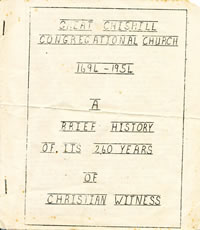

Note the collapsed tower of St.Swithun's in the background!


GREAT CHISHILL CONGREGATIONAL CHURCH
1694-1954
A BRIEF HISTORY OF ITS 260 YEARS OF CHRISTIAN WITNESS
1694-1954
A BRIEF HISTORY OF ITS 260 YEARS OF CHRISTIAN WITNESS
On May 20th (1954) the Congregational Church at Great Chishill celebrates the 260th Anniversary of its formation, and the Diamond Jubilee of the present building.
The Fellowship at Great Chishill, though not the building, goes back to the very early days of Independency, and owes much to a certain Nathaniel Ball, who was appointed to the living of Barley in 1652 and, like many others, was ejected from his living for non-conformity ten years later. Though ejected, Mr Ball did not cease to preach, among his hearers being one, John Nicholls, who afterwards became the church’s first minister.
The erection of a place of worship was made possible by the Toleration Act of 1689 when, as one historian puts it, “Non-conformist religion ceased to be a hole-and-corner affair, and new meeting-houses sprang up like mushrooms.” But long before this John Nicholls was ministering to the Fellowship, and that in a very curious place.
A little below the windmill at Great Chishill the Royston road crosses a ditch (the Herts-Cambs boundary) which used to be the boundary between the counties of Essex, in which Chishill was then included, and Hertfordshire. Towards the village of Little Chishill this ditch widens, being known locally, I am told, as Comberton Bottom, and it was here that John Nicholls and his congregation used to assemble. A sharp look-out was kept, and upon the approach of Authority from either side the meeting would quietly decamp into the next county! Apparently it never occurred to the two Authorities to co-operate so far as to both appear on their respective boundaries at the same time, and the non-conformists seem to have held their gatherings more or less in peace.
When the first building was erected in 1694 John Nicholls naturally became its first pastor, officiating on alternate Sundays at Melbourn, where a Congregational Church has also been formed. This association with Melbourn continued until about 1746 when the two churches separated during the pastorate of Dr. John (or James?) Watson, John Nicholls’ successor.
Dr. Watson continued as a minister of Great Chishill until his removal to London in 1760, after which date the fortunes of the church greatly declined, so that for many years it was impossible to obtain another minister. Thanks, however, to a number of devoted laymen the cause continued, if not to flourish, at least to be maintained, and by 1795 conditions had so far improved as to make possible the induction to the pastorate of the Rev. James Dobson.
Under his ministry the church revived so remarkably as to necessitate alterations to the building, but while these were in progress it caught fire and was destroyed, together with the greater part of the village. This was in February, 1798. New premises were erected, part of which still remain in what is known as ‘the old school-room’, so called because under the leadership of the Rev. James Mirams a British School was established there. The school itself has, of course, long ceased to exist, but one of our younger Deacons well remembers helping to move out the old desks, their ink-wells still in place, only a few years ago.
After some time it became evident that a new building would have to be erected, the former one having become unsafe, and a fund was opened for this purpose during the ministry of the Rev. J. S. Butcher. An interesting detail in connection with this fund is that over £100 was raised for it by the personal effort of Miss E. Smith (later Mrs Frank Brand), a sister of the late Mr Charles Smith of Royston.
The old chapel was closed on Sunday, Sept. 23rd, 1894, and on Nov. 8th following the memorial stone of the present building was laid by Mr A.R. Goddard. Before Christmas the roof was on, (evidently ‘working to rule’ had not been thought of!), and on Friday, May 3rd, 1895, the new chapel was opened, the preacher being Dr. R. F. Horton, of Hampstead.
1694-1954 – two hundred and sixty years, during which the evangelical tradition has been steadfastly maintained, whether in prosperity or adversity, in this village of some three hundred souls. What of the future? Present membership (59) is less than we should like to see, but those 59 show the same spirit of giving as their forefathers. Every year something over £30 goes out from the church to further the spread of the Gospel overseas, and, in addition, last year the whole building was repaired and re-decorated, the bulk of the cost being met by the efforts and gifts of the members themselves. If we continue to give spiritually as devotedly as we have done financially we need have no fears for the future, but can look forward with confidence to our Tri-Centenary in 1994.
E.G. Oyston. (Church Secretary, 1954)
The Fellowship at Great Chishill, though not the building, goes back to the very early days of Independency, and owes much to a certain Nathaniel Ball, who was appointed to the living of Barley in 1652 and, like many others, was ejected from his living for non-conformity ten years later. Though ejected, Mr Ball did not cease to preach, among his hearers being one, John Nicholls, who afterwards became the church’s first minister.
The erection of a place of worship was made possible by the Toleration Act of 1689 when, as one historian puts it, “Non-conformist religion ceased to be a hole-and-corner affair, and new meeting-houses sprang up like mushrooms.” But long before this John Nicholls was ministering to the Fellowship, and that in a very curious place.
A little below the windmill at Great Chishill the Royston road crosses a ditch (the Herts-Cambs boundary) which used to be the boundary between the counties of Essex, in which Chishill was then included, and Hertfordshire. Towards the village of Little Chishill this ditch widens, being known locally, I am told, as Comberton Bottom, and it was here that John Nicholls and his congregation used to assemble. A sharp look-out was kept, and upon the approach of Authority from either side the meeting would quietly decamp into the next county! Apparently it never occurred to the two Authorities to co-operate so far as to both appear on their respective boundaries at the same time, and the non-conformists seem to have held their gatherings more or less in peace.
When the first building was erected in 1694 John Nicholls naturally became its first pastor, officiating on alternate Sundays at Melbourn, where a Congregational Church has also been formed. This association with Melbourn continued until about 1746 when the two churches separated during the pastorate of Dr. John (or James?) Watson, John Nicholls’ successor.
Dr. Watson continued as a minister of Great Chishill until his removal to London in 1760, after which date the fortunes of the church greatly declined, so that for many years it was impossible to obtain another minister. Thanks, however, to a number of devoted laymen the cause continued, if not to flourish, at least to be maintained, and by 1795 conditions had so far improved as to make possible the induction to the pastorate of the Rev. James Dobson.
Under his ministry the church revived so remarkably as to necessitate alterations to the building, but while these were in progress it caught fire and was destroyed, together with the greater part of the village. This was in February, 1798. New premises were erected, part of which still remain in what is known as ‘the old school-room’, so called because under the leadership of the Rev. James Mirams a British School was established there. The school itself has, of course, long ceased to exist, but one of our younger Deacons well remembers helping to move out the old desks, their ink-wells still in place, only a few years ago.
After some time it became evident that a new building would have to be erected, the former one having become unsafe, and a fund was opened for this purpose during the ministry of the Rev. J. S. Butcher. An interesting detail in connection with this fund is that over £100 was raised for it by the personal effort of Miss E. Smith (later Mrs Frank Brand), a sister of the late Mr Charles Smith of Royston.
The old chapel was closed on Sunday, Sept. 23rd, 1894, and on Nov. 8th following the memorial stone of the present building was laid by Mr A.R. Goddard. Before Christmas the roof was on, (evidently ‘working to rule’ had not been thought of!), and on Friday, May 3rd, 1895, the new chapel was opened, the preacher being Dr. R. F. Horton, of Hampstead.
1694-1954 – two hundred and sixty years, during which the evangelical tradition has been steadfastly maintained, whether in prosperity or adversity, in this village of some three hundred souls. What of the future? Present membership (59) is less than we should like to see, but those 59 show the same spirit of giving as their forefathers. Every year something over £30 goes out from the church to further the spread of the Gospel overseas, and, in addition, last year the whole building was repaired and re-decorated, the bulk of the cost being met by the efforts and gifts of the members themselves. If we continue to give spiritually as devotedly as we have done financially we need have no fears for the future, but can look forward with confidence to our Tri-Centenary in 1994.
E.G. Oyston. (Church Secretary, 1954)
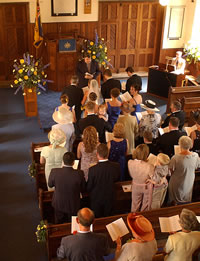
The United Reformed Church, Great Chishill
More than 300 Years of History
From the Book, 'His Candlestick and a Light Among Them' by Rev. Reginald Rooke, 1994
Reproduced here by kind permission of the author
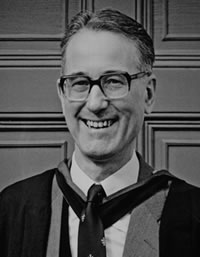
1741-1760 James Watson M.A., D.D
1795-1832 James Dobson
1833-1847 John Dorrington
1848-1857 James Mirams
1883-1889 Richard Tutin Thomas
1889-1899 John Shadrach Butcher
1900-1906 Samuel Pendred
1909-1910 Herwood Allen
1910-1916 John Robert Fitch Pledger
1917-1945 George Hobson
1946-1951 Frederick Thomas Oliver
1951-1957 Frederick Thomas Greaves
1964-1966 David Malcolm Buckle B.A
1967-1973 Mrs. Constance Olive Maude Payne
1977-1981 Clifford Lloyd Taylor
1981-1983 Gillian Avril Jones B.A.
1984-1988 William Ward Murray
1996-2004 David Yule
2002-2009 Carole Pearl
2006- Duncan Goldie
The book is divided into 26 short chapters. Each chapter is reproduced here and can be accessed in full by clicking on the blue coloured text. The coloured text link is a small paragraph or sentance from the chapter, to give a taste of the content. The text will open using Adobe Reader. If you don't have this program you can get it by clicking on this picture (its free!)

This booklet is an attempt to tell the history of two church congregations (one of which has unhappily ceased to be), based upon recorded information from many different, sources but amplified by the memories of many who lived and worshipped there throughout their lifetime.
Often it was considered too risky to hold a meeting for worship indoors, or during daylight hours. Francis Holcroft and Joseph Oddy, (who instigated many Dissenting groups in this area), are recorded as having met friends for worship at midnight in a secluded lane. This lane lay a little below the windmill, on the boundary between Essex and Hertfordshire.
This was later used by John Nicholls and his flock for their clandestine meetings, for they took advantage of the geography by slipping into Hertfordshire if the Essex constables arrived of vice versa if the Hertfordshire officers arrived. Neither police force was allowed to enter the other county, and it obviously proved beyond the wit of man to mount a joint attack.
The historian Robert Robinson established that a congregation constituted itself and settled in Chishill (Jointly with Melbourn) in 1694, and that alternate Services of Worship were held in the two places until the congregations were strong enough to separate and stand on their own feet.
For this, he based himself upon the tradition of the congregation, but he records his regret that 'neither church-book nor any written documents are to be found except the title-deeds of the meeting-house'. In fact, there is a suggestion of an earlier gathering from a return of independent churches in 1690 which refers to 'Mr. Allen at Barley or thereabouts ..... a Scotchman' and again 'Mr. Allen at Chishill'.
Mr. Nicholls began to preach in the open air to as many as were prepared to hear the simple truths of the Christian Gospel. He attached himself to the growing body of Dissenters, and was introduced to the pastoral office at Chishill, where the congregation had obtained a licence to use a barn in May Street for religious worshiP.
He was considered 'a judicious and evangelical preacher, but possessed of a voice naturally unmusical, which was made even more inharmonious by a broad Scottish accent, so that his labours were far from popular with the multitude'. Tradition has it that, one Sunday morning, Mr. Watson rode on horseback frorn Melbourn to find the church door locked against him, and another person conducting the Service.
As if an unpromising beginning was not enough, calamity soon struck the church and its surrounding neighbours. Whether because repairs were now urgently needed upon a decaying building, or the life of the church began to expand rapidly, it was decided to start repair work upon the structure. On 22nd February 1798, however, a fire became out of control.
It was necessary as a result of the fire damage to build a new meeting-house, part of which remained as the 'old schoolroom' until demolished in 1991. This was achieved by the fund-raising abilities of Mr. Dobson, the liberality of his congregation even though the fire had destroyed much of their property and livelihood, and the aid of the religious public.
'Christian friends, according to intimation given a short time agor I have this day to announce that I am no longer your pastor, it having pleased God to deprive me of a voice sufficiently strong to have the efficient discharge of public duty'.
At about this time, many conveyances might be seen taking worshippers from surrounding villages to the chapel, and numbers walked or rode. The morning Service was at 10.30 a.m, after which many ate their lunch in the schoolroom or repaired to a local hostelry for the purpose. The afternbon Service followed after a short interval at 2 p.m.
Concentration could often be a problem, for sermons were long, and men who were used to working in the open air often felt quite sleepy and would stand up in order to keep themselves awake.
The later years of Mr. Irwin's ministry saw great economic difficulties amongst his flock, for it was a period of great agricultural depression. It was said that every farm in the Great Chishill neighbourhood save one had seen a change of tenant, a most unusual and worrying phenomenon. A large proportion of the farm labourers had scattered or emigrated.
Despite his sensitive health, Mr. Thomas was an energetic leader and caused a number of new enterprises to begin. A brick and flint wall was built around the graveyard, although the date of its acquisition is not known. An organ was obtained for accompaniment of hymn singing. Mr. Thomas was obviously quite musical, for he composed a number of hymns.
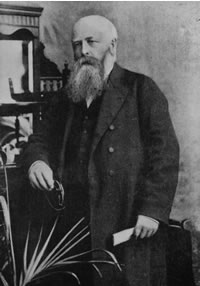
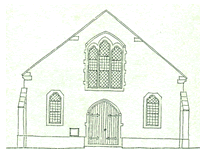
He (Thomas Loose) is first known as a missionary in Peelton, South Africa, from 1903-1906 and after leaving Great Chishill and Barley, he moved to Bowen, Queensland, where he was temporarily out of pastoral charge until resuming ministry in Southport in the same State from 1911 onwards.
At a 'Church Business Meeting' held on 21st September 1910, the pastor and deacons were authorised to transfer affiliation to the Cambridgeshire Congregational Union. Prudently, this change was subject to continuation of the grant being secured.
In February 1914, the practice of individual Communion cups (rather than a common chalice) was adopted. It was still normal for the main Service to be distinct from the monthly Communion Service which might follow.
A very friendly, dapper man, Mr. Hobson was popular in both villages and would regularly help the smallholders at harvesL-time. He was not noted for his preaching ability but rather for his fast, motorbike, the sight of which scared his congregations. During the Second World War he served as An A.R.P. Warden, with the manse becoming the local headquarters.
Mr. Greaves was tall and thin, noted for tapping his stick as he walked, for he was rather unsteady on his feet.. Somewhat unusually, he visited members of the congregation by bicycle at night. He shared actively in the wider work of the Church, and it was said of him that 'he made and left his own distinctive mark. His influence cut deep because it was exercised without intrusion'.
Mr. Buckle was tall, likeable and lively. He had great appeal to young people, being of such a different, age from previous minisiters, and it was 'open house' at the manse for young people after each Evening Service. He enjoyed visiting his congregations, and was equally at ease with and liked by elderly members. Many were pleased to offer him hospitality, and it was noted that he had an overwhelming fondness for cauliflower cheese.
A new departure occurred with selection of the next minister, for although the first woman minister had been ordained in a Congregational Church in 1917, it had never been suggested until now that Great Chishill might make such an appointment.
Soon after the arrival of Mrs. Payne, plans began to circulate about a proposed wider grouping of the churches in the area, and in due course a 'Royston Group' was formed, consisting of the churches in Great, Chishill, Bassingbourn, Buntingford, Melbourn, Croydon, Litlington, Great Chishill, Barley, Fowlmere, Thriplow and Royston.
Changes in ministers within the Royston Group over a few years caused the District Council to suggest that Great Chishill and Barley churches might consider joining with Saffron Walden URC instead. This would inevitably have meant severing the links with the other churches of the Royston Group.
On 22nd February 1798 however, a fire became out of control, as this account, dated 10th April 1789 from a local miller (Mr. Jon Andrews) vividly tells
'The town burnt 22nd February 1798, began at the meeting-house by Deall Shavings being put in to the Vestry House Chimley, and it was said the lad hung on the Blower and left it for to go for a can of Beer by order of the workmen who was at that time working in the New-Built house for the Decenting Minister to live in, and that in the absence of the Boy in a few minutes went up the Chimley and fell on the Thatched part of the Meeting and in a few minites got to go ahead so that the principle part of the Town was down in less than two Hours, it began as near as could be thought at two o'clock in the Afternoone. Lucky no lives was lost nor Cattle except three or four Hogs.
The wind was west, and very strong, such that the Millers call a 'Middle Sackwind' i.e. struck up the midle of the sail.
By way of post-script, , Mr. Andrews describes the fortunate escape of the Parish Church from this conflagration :
The Church was also on Fier i.e. The roof and above the Bells and the Toller or the floor unde the Bells, the two Breaches had got about the Bigness of a comnon Fan. But very luckeyly I and Mr. Ridenton (of the Hall) with the asistane of teen or a dozen more mannaged to get it Extinguish'd.
A weekly offering as part of the worship was begun only in 1920, and all members of the congregation (including any remaining pew renters) were expectted to contribute. The use of 'Free Will Offerings' in which members guaranteed to offer a minimum fixed sum in the weekly envelope provided, was only introduced in 1936. A bazaar is first, mentioned in 1928, and waste paper was later collected for sale.
Other methods of raising money included 'silver trees' and 'sunshine money'. The first of these was an invitation to insert an amount of silver in a sealed envelope and hang this, together with a suitable Bible text, bn a tree installed in the church. The effect was simiiar to hanging decorations on a Christmas tree. At an agreed date, these envelopes would be opened and the total amount proclaimed.
In addition, members of the congregation would offer gifts of vegetables and other produce, and probably farmers would offer poultry and other meat at Christmas time. It was the practice until the advent of Rev. George Hobson to donate the Harvest Festival gifts to the minister.
It is told that an accident befell Mr. Butcher during conduct of a Wedding Service, in that his eyeglass came apart and he was unable to read the Service wording. This might have prevented the ceremony being completed, but fortunately for him the bridegroom was a jeweller and during a pause in the proceedings, he was able to repair the eye-glass on the spot.
In 1663 an intriguing report states 'There lyes a Widow Hawkes at Barley in Hertfordshire who hath meetings of 300 at a timer'. She could hardly have used her home for this purpose, and presumably the meetings took place in a barn, the largest of the buildings in a village. In 17O4 a place of worship was registered by a John Norris.
'We had brass larnps to light the Chapel when I was young, which had to be cleaned and polished and filled with paraffin every week. Mum made cakes and rag dolls, and used to go round the village getting people to guess the weight, or name the doll to help Chapel funds.
A Mr. and Mrs. Brown kept a convalescent home in Barley, and regularly brought patients who swelled the congregation by occupying two whole pews. Likewise Mr. Walter Doggett, a local farmer and lay preacher, encouraged German prisoners-of-war working on his farm to accompany him.
There was much uncertainty in Great Chishill as to future links with other churches, whether to continue the association with Saffron Walden URC, or to consider the link which was being mooted with Melbourn, Fowlmere and Rassingbourn United Reformed Churches. This last grouping, under the title 'Melbourn Linked Pastorate', had been suggested at a special meeting of representatives of the churches south of Cambridge in February 1988.
The tercentenary celebrations in Great Chishill are based on faith that from a basic conmunity of currently 440 adults, a viable congregation will continue to be forthcoming well into the future.